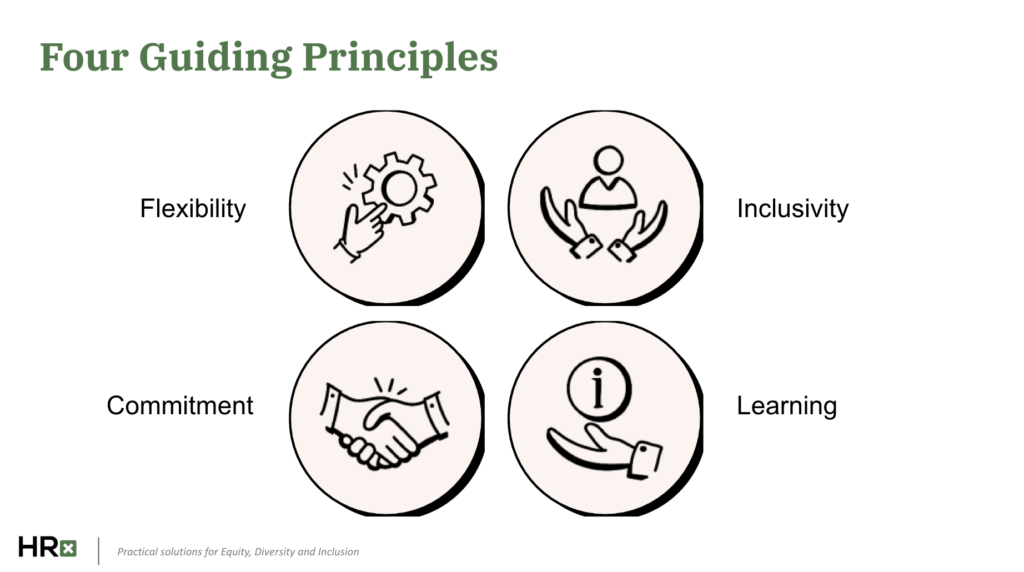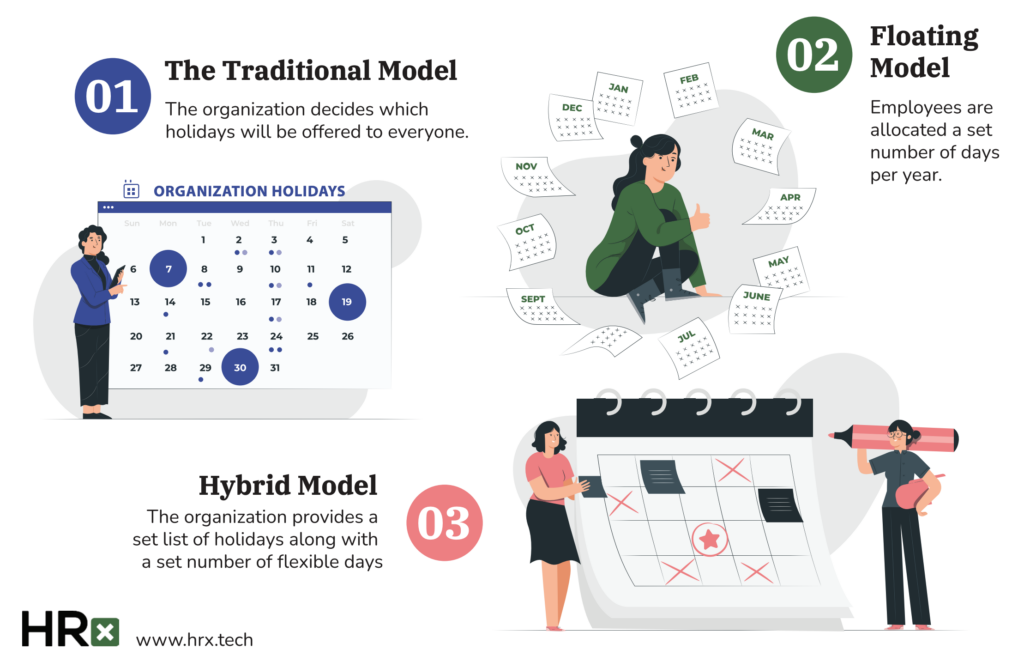A welcoming, inclusive workplace recognizes diversity, including by acknowledging that different people may wish to mark different days of significance throughout the year.
“Everyone should have the right to acknowledge what matters to them,” says Sara Hamelin, HR consultant with Inclusivity.
As a result, many organizations focused on creating more equitable policies around holidays are moving away from a “one-size-fits-all” approach toward more adaptive, flexible systems.
As we explain below, developing an inclusive policy around holidays is a complex, organization-specific process. At the same time, HR professionals and others involved can be guided by key principles and consider the pros and cons of different models to decide which approach works in each case.

Guiding Principles for Inclusive Holidays
Flexibility: Most organizations find that a flexible approach to stat holidays is the best way to enhance holiday inclusivity while addressing operational needs
Inclusivity: Avoiding assumptions, considering accessibility, and acknowledging different kinds of important events in the calendar year are important ways to build inclusivity.
Commitment: Marking important events for diverse employees must be part of a larger, organization-wide approach to creating comprehensive approaches to EDI.
Learning: Changes related to holidays should occur within a context of ongoing learning and growth and build in structured, systematic ways of receiving regular feedback from staff
History: The right to rest
Holidays are the result of advocacy by labour movements for paid days of rest and relaxation for workers. Over time, as part of a progression of labour standards, governments across levels have come to mark and regulate protection of holidays, including via employment legislation.
Globally, different countries mark different holidays, with associated days off. In Canada, there are, on average, 11 statutory holidays per year, though this number – and the specific names and dates of the holidays – vary by province. Knowing this geography is important when defining the scope of a holiday policy and identifying approaches to which days are designated as holidays.
Conventional approaches to “days of significance” and the challenges for inclusivity
A traditional approach to stat holidays offers days off based on historical commemoration or religious traditions that may not be relevant to employees – or may even be alienating. For example, two out of five holidays held nationwide (Good Friday and Christmas) are based on Christian beliefs, despite the prevalence of other religions and beliefs in this country and a declining adherence to religious belief and practice among young people. Further, holidays such as Victoria Day commemorate histories of empire and control that entailed significant violence and oppression for colonized peoples.
At the same time, many days and events important to communities are not represented in the national or provincial annual schedule of holidays. Employees have had to use personal days or vacation days to mark significant cultural or religious events (such as Chinese New Year, Eid, the Day of the Dead, Yom Kippur, Diwali, and Emancipation Day).
Approaches to Holidays: Three Models

To support employees, many organizations are developing new approaches to holidays and the recognition of diverse days of significance. The specifics of such approaches are dependent on staff and operational needs but, in general, many organizations are moving away from the traditional model and focusing on flexibility as a way to recognize diversity.
- Traditional model: The organization follows the legislated schedule of holidays. Employees are required to use their paid-time-off (PTO) days to observe other holidays or days of significance.
- Floating model: In this model, employees are given a set number of “holiday PTO” days for a year on their own preferred days. In this approach, employees may swap any or all statutory holidays for a different day. This is the most inclusive and flexible approach but can have administrative and operational challenges.
- Hybrid model: This approach combines the traditional model with floating holidays. The organization provides a set list of holidays along with a set number of flexible days. In other words, the organization provides a list of which statutory holidays are available to swap, while others remain fixed.
Example of the Hybrid Model: The Boys and Girls Club of BC
The Boys and Girls Club of BC has chosen five stat holidays as “swappable” for employees: Boxing Day, Thanksgiving, Good Friday, Victoria Day, and Canada Day can all be switched for other dates or holidays.
The importance of communication: As part of developing a new holiday policy, organizations should consider how the details will be communicated to current employees and included in future onboarding processes. Creating a culture of inclusion around holidays can also mean developing a calendar of significant events for different cultures and religions and making this calendar visible within the organization.
Operationalizing the Change
As organizations consider what an inclusive holiday approach will work for their company, consultation and careful planning is important:
- Consultation with equity, diversity, and inclusion (EDI) committees can be helpful.
- Engagement surveys or polls can provide helpful information about dates of significance and employee experience of current policy.
- Teams implementing a new policy will also need to consult with the payroll team.
- Operational concerns around office access, communication, and safety must be addressed.
- Any union requirements will need to be discussed and integrated, such as those around seniority or minimum number of holiday days.
Flexibility, Diversity, and Recognition
Studies have shown that policies that give employees the space and support to feel like themselves at work – including the opportunity to celebrate and commemorate the days that are meaningful to them – greatly improve staff engagement and retention.
Overall, an inclusive approach to holidays supports team members in celebrating the days that matter to them while building recognition among the team of the diversity that exists within an organization.

















